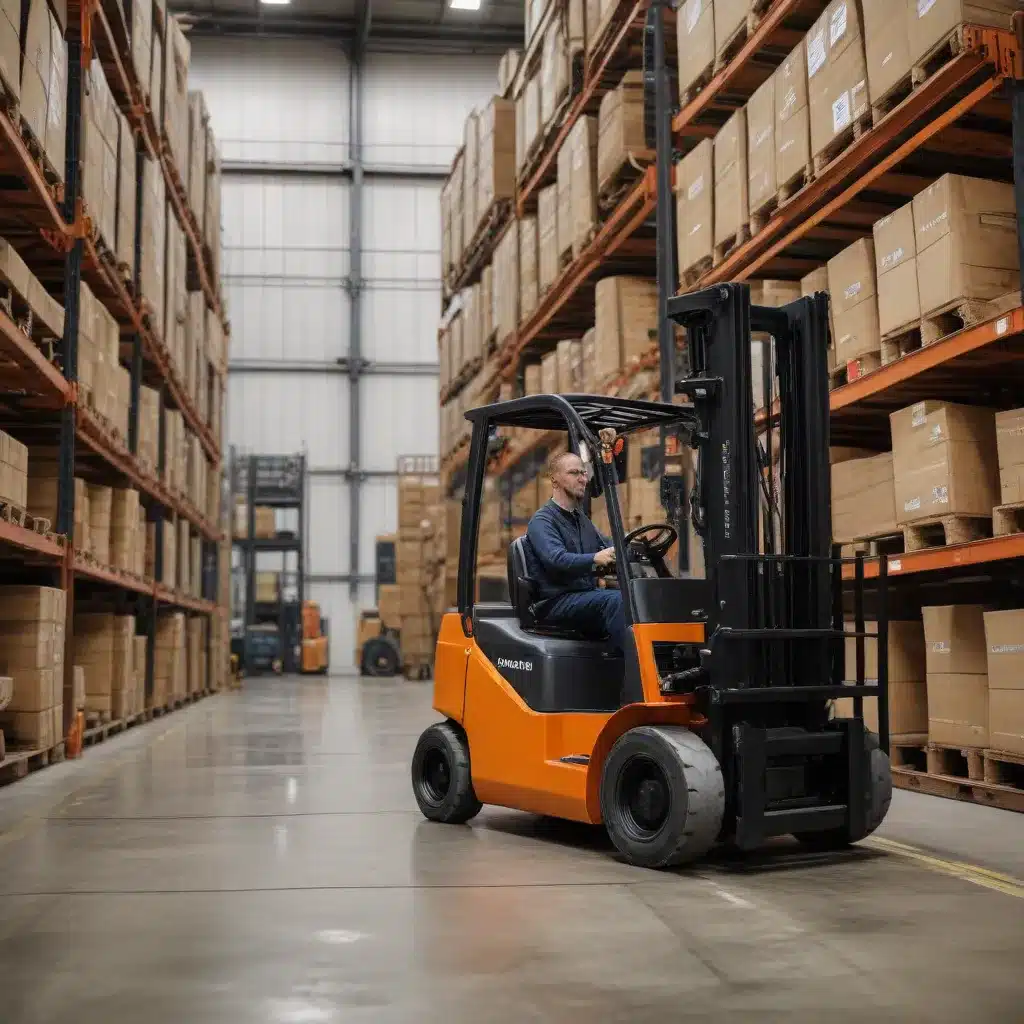
The Rise of Digital Twins in the Forklift Industry
The forklift industry has undergone a remarkable transformation in recent years, driven by the emergence of innovative technologies that are reshaping the way we approach sustainability and efficiency. At the forefront of this revolution is the concept of digital twins – virtual replicas of physical forklift assets and the entire warehouse environment.
Digital twins have rapidly gained traction in the forklift industry, providing a powerful tool to optimize operations, enhance safety, and drive sustainability initiatives. By creating a comprehensive digital representation of forklifts, warehouses, and logistics processes, these virtual models offer unprecedented insights and the ability to simulate, analyze, and predict real-world scenarios.
Achieving Operational Efficiency through Digital Twins
One of the primary applications of digital twins in forklift operations is the optimization of material handling and logistics workflows. By integrating real-time data from sensors, telematics, and warehouse management systems, digital twins can provide a holistic view of forklift utilization, traffic patterns, and resource allocation.
Using advanced analytics and simulation capabilities, digital twins can identify bottlenecks, forecast demand, and optimize forklift routing and scheduling. This enables warehouse managers to make data-driven decisions, reduce unnecessary movements, and improve overall operational efficiency. For example, a digital twin can simulate different forklift deployment scenarios, allowing operators to test and refine strategies before implementing them in the physical environment.
Furthermore, digital twins can be leveraged to enhance maintenance and service planning for forklifts. By continuously monitoring the health and performance of individual forklifts, these virtual models can predict potential failures, recommend proactive maintenance actions, and optimize parts inventory. This not only extends the lifespan of forklift assets but also minimizes unplanned downtime, ensuring that the warehouse operations run smoothly.
Improving Forklift Safety with Digital Twins
Alongside operational efficiency, digital twins play a crucial role in enhancing forklift safety. By creating a virtual representation of the warehouse environment, including the layout, infrastructure, and traffic patterns, digital twins can simulate and analyze potential safety hazards.
Through real-time monitoring and advanced analytics, digital twins can detect unsafe driving behaviors, identify collision risks, and notify operators and managers of potential incidents. This enables proactive safety measures, such as adjusting forklift speeds, implementing traffic control systems, and providing targeted training to operators.
Moreover, digital twins can be used to develop and test safety protocols, emergency response plans, and operator training scenarios in a risk-free virtual environment. This allows warehouse personnel to familiarize themselves with critical procedures and refine their responses before facing real-world emergencies.
Driving Sustainability in Forklift Operations
Sustainability has become a key priority for forklift operators and warehouse managers, as they strive to reduce their environmental impact and align with corporate sustainability goals. Digital twins offer a powerful solution to address this challenge by providing a comprehensive view of energy consumption, emissions, and resource utilization.
By integrating data from forklift telemetry, energy meters, and environmental sensors, digital twins can track and analyze the energy usage and carbon footprint of forklift operations. This information can then be used to identify opportunities for energy efficiency improvements, such as optimizing forklift fleet composition, implementing charging strategies, and exploring alternative fuel sources.
Furthermore, digital twins can simulate the impact of sustainability initiatives, such as the adoption of electric forklifts or the implementation of renewable energy sources. This allows warehouse managers to evaluate the potential benefits, assess the feasibility, and make informed decisions that align with their sustainability objectives.
Overcoming Challenges and Unlocking the Full Potential of Digital Twins
While the potential of digital twins in the forklift industry is significant, there are several challenges that must be addressed to unlock their full potential. One of the key challenges is the integration and harmonization of data from various systems and sources, including forklift telematics, warehouse management systems, and environmental sensors.
To overcome this challenge, warehouse operators must invest in robust data management and integration strategies, ensuring that the digital twin can access and synthesize all relevant information seamlessly. Additionally, ongoing maintenance and updating of the digital twin model are crucial to keep it aligned with the evolving physical environment and operational changes.
Another challenge is the adoption and acceptance of digital twin technology among forklift operators and warehouse personnel. Effective change management, training, and communication are essential to ensure that the full benefits of digital twins are realized and embraced by the workforce.
By addressing these challenges and leveraging the power of digital twins, forklift operators and warehouse managers can unlock a new era of operational efficiency, safety, and sustainability. As the forklift industry continues to evolve, the integration of digital twins will become increasingly vital in maintaining a competitive edge and driving the industry towards a more sustainable future.
Conclusion
The forklift industry is at the cusp of a transformative era, and digital twins are at the heart of this revolution. By creating virtual replicas of physical assets and environments, digital twins are empowering forklift operators and warehouse managers to optimize operations, enhance safety, and drive sustainability initiatives.
From improving material handling workflows to predicting maintenance needs and mitigating safety risks, digital twins are proving to be invaluable tools in the forklift industry. By embracing this technology and addressing the challenges associated with its implementation, forklift operators can unlock new levels of efficiency, reduce their environmental impact, and position their businesses for long-term success.
As the industry continues to evolve, the integration of digital twins will be paramount in maintaining a competitive edge and contributing to a more sustainable future for the forklift industry. Forklift Reviews, the leading industry resource, is committed to providing in-depth coverage and practical insights on the transformative role of digital twins in forklift operations. Stay tuned for more articles exploring the latest trends, best practices, and innovative solutions that are shaping the future of this dynamic industry.

